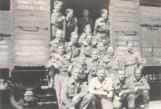1
The Canadians attached to the RAF as radar mechanics and technicians were sent into every theatre of war, including North Africa, Italy, and Southeast Asia. There is not space in just one exhibit to describe all of their actions and the importance of the many different types of technology that were used, however, in all cases the secrecy was necessary, the conditions were difficult, and the work was important.Airborne and mobile radar technicians support RAF Squadrons and front line troops in a variety of ways, from checking and repairing all of the airborne radar equipment in the aircraft before and after every flight, to providing information about the location of enemy aircraft. Airborne radar, such as the Air Interception radar installed in Night Fighter planes, was made possible by the invention of the magnetron. Arguably the most important invention of the war, the magnetron generates powerful microwave radar from a device small enough to fit in the palm of your hand. Other important airborne radar applications include Aircraft to Surface Vessel (ASV), which was used to locate German U-Boats.
2
The North African campaign began in June 1940. The Allied Forces fought a desert war in Libya, Egypt, Morocco, Algeria and Tunisia against the Axis Powers. Both armies wanted control of the sea routes in the Mediterranean and the main supply ports, Tobruk and Benghazi. The Allied forces launched Operation Compass to destroy the Italian Tenth Army, but fresh Italian troops and German forces commanded by General Rommel were sent to reinforce the Italian forces in Libya. Together they launched a full-fledged offensive. The war raged on until the German and Italian forces surrendered in May 1943 with the loss of 275,000 men as prisoners of war, which greatly reduced their military capacity. Airborne radar and mobile radar units ensured successful interception of enemy aircraft and were a significant force in defeating the Axis forces.3
RCAF Flying Officer's jacket. The bars show service overseas, including in Italy and North Africa1940 to 1946
 Credits:
Credits:The Secrets of Radar Museum
Pacifico Valeriote Collection
5
An RCAF Frequency Indicator unit, manufactured in Canad in 1943 by Canadian MarconiCirca 1943
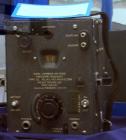 Credits:
Credits:The Secrets of Radar Museum
Charles W. Young Collection
Canadian Marconi Company
6
A warning on this equipment case warns technicians to remove the detonator before making repairs!1940-1945
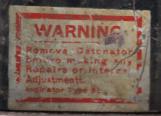 Credits:
Credits:The Secrets of Radar Museum
7
The invasion of Italy began in 1943 after the Casablanca Conference when the combined Chiefs of Staff, Winston Churchill and President Roosevelt resolved to secure Allied communications in the Mediterranean. The first use of Fighter Direction Tenders (FDTs), which used ground radar installations mounted on ships, was tested during the invasion of Sicily and were later used to great advantage during the D-day invasion. Mobile ground radar installations such as Ground Controlled Interception (GCI) could be erected in a number of hours, but dismantled and transported by trucks when the forces moved further ahead. They were usually camouflaged so as to appear like shrubs or greenery when enemy aircraft flew overhead.8
Ground Control Interception (GCI) radar convoy in Italy1943-1945
Unknown Location, Italy
 Credits:
Credits:Royal Air Force Photograph
The Secrets of Radar Museum Archives
9
A GCI radar convoy in Italy. Mobile radar units were very effective overseas.1943-1946
Unknown Location, Italy
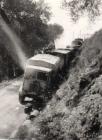 Credits:
Credits:Royal Air Force Photograph
The Secrets of Radar Museum Archives
10
Compass from an Italian aircraft. Allied airborne radar was very useful to RCAF and RAF navigators.1940 to 1946
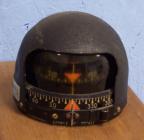 Credits:
Credits:The Secrets of Radar Museum
11
The campaign in South East Asia began in December 1941 when Japanese troops crossed into Burma from Siam. Three Canadian squadrons (including several hundred aircrew and seven hundred radar mechanics) attached to the RAF entered the conflict with Britain to fend off the rapidly advancing invasion by Japanese forces. Service in South East Asia meant being far from home where mail was slow and undependable and entertainers rarely visited. Leaves to visit home or relatives were impossible. The Canadian press rarely mentioned the war in Southeast Asia and in the intervening years the campaign has received little attention from Canadian historians, but many Canadian radar mechanics and technicians provided crucial support to the RAF Squadrons in South East Asia Command.12
Many Canadians were stationed overseas with the RAF, including in Southest Asia1940 to 1945
Unknown Location, India
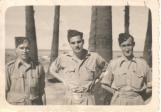 Credits:
Credits:The Secrets of Radar Museum
Allan M. Sinclair Collection
13
A travel brochure for Bombay, India, appealing to RAF servicemen on leave1941-1945
Bombay, India
 Credits:
Credits:The Secrets of Radar Museum
Allan M. Sinclair Collection
14
"Boost" station magazine from RAF Station Korangi Creek in what is now PakistanJuly 1944
 Credits:
Credits:The Secrets of Radar Museum
